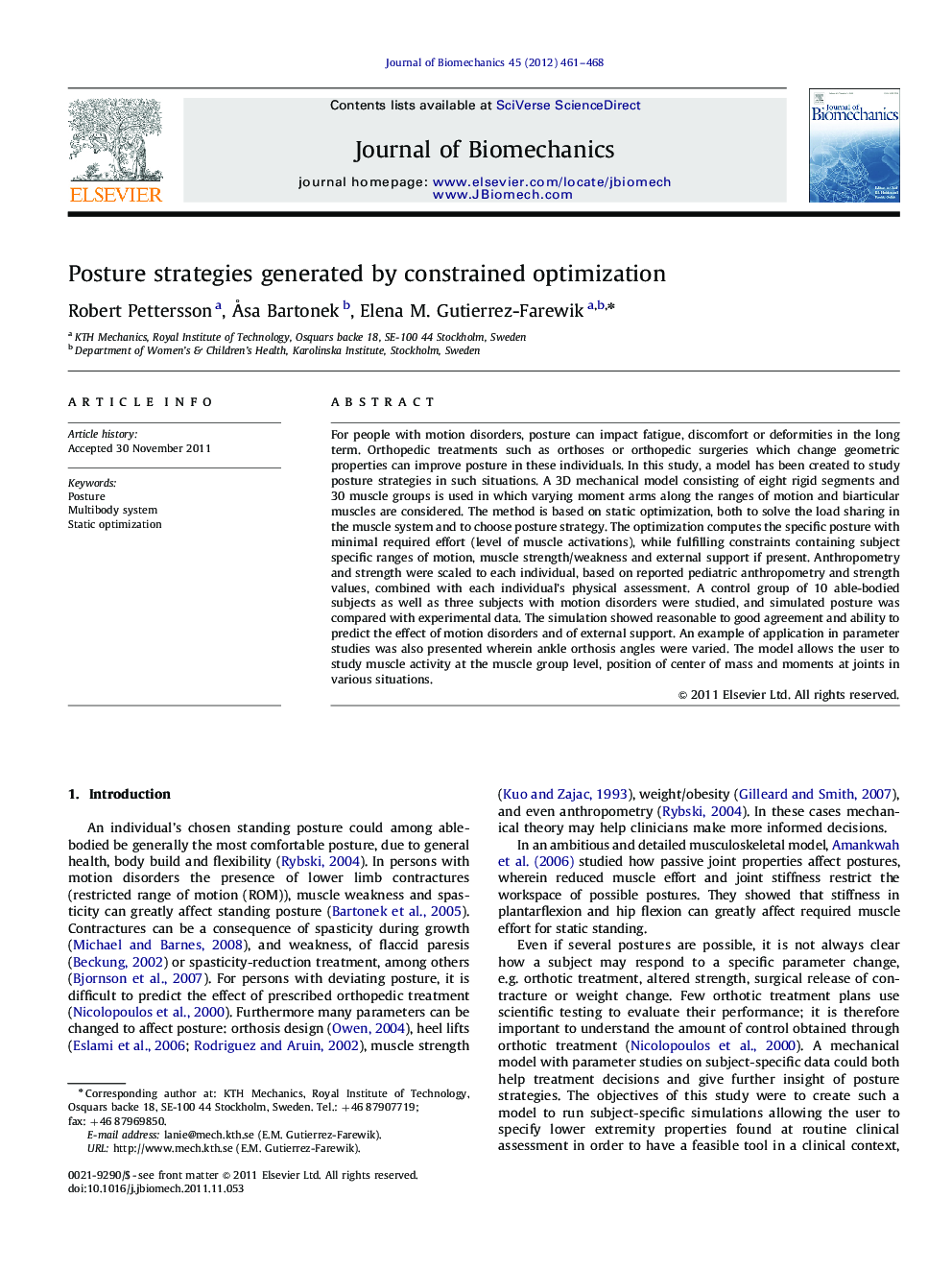| Article ID | Journal | Published Year | Pages | File Type |
|---|---|---|---|---|
| 10432659 | Journal of Biomechanics | 2012 | 8 Pages |
Abstract
For people with motion disorders, posture can impact fatigue, discomfort or deformities in the long term. Orthopedic treatments such as orthoses or orthopedic surgeries which change geometric properties can improve posture in these individuals. In this study, a model has been created to study posture strategies in such situations. A 3D mechanical model consisting of eight rigid segments and 30 muscle groups is used in which varying moment arms along the ranges of motion and biarticular muscles are considered. The method is based on static optimization, both to solve the load sharing in the muscle system and to choose posture strategy. The optimization computes the specific posture with minimal required effort (level of muscle activations), while fulfilling constraints containing subject specific ranges of motion, muscle strength/weakness and external support if present. Anthropometry and strength were scaled to each individual, based on reported pediatric anthropometry and strength values, combined with each individual's physical assessment. A control group of 10 able-bodied subjects as well as three subjects with motion disorders were studied, and simulated posture was compared with experimental data. The simulation showed reasonable to good agreement and ability to predict the effect of motion disorders and of external support. An example of application in parameter studies was also presented wherein ankle orthosis angles were varied. The model allows the user to study muscle activity at the muscle group level, position of center of mass and moments at joints in various situations.
Related Topics
Physical Sciences and Engineering
Engineering
Biomedical Engineering
Authors
Robert Pettersson, Ã
sa Bartonek, Elena M. Gutierrez-Farewik,
